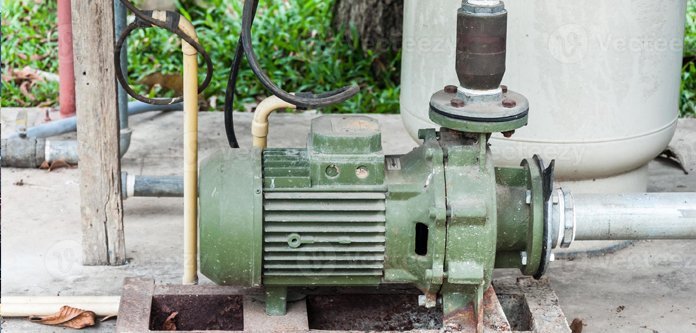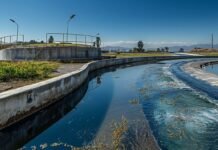“Old never dies.”
In workshops, pumping stations, and mines across Africa, you’ll still find old cast-iron pumps faithfully grinding away. They’re bulky, heavy, and—let’s be honest—not pretty. Yet, despite decades of use, many are still running strong.
Meanwhile, modern pumps are sleek, smart, and energy-efficient, but often don’t seem to match the decades-long service life of their predecessors. So, what changed?
To answer this, we turn to the insights of Serkan Ogut, Wilo’s Regional Director of Product Management, AMEA, who wrote “Why New Generation Pumps Don’t Last as Long as Old Ones” in Utilities Middle East. His verdict? Old pumps were built for immortality, but new pumps are built for intelligence and efficiency.
The Legacy of Old Pumps: Built Like Tanks
Older pumps were, quite literally, built to last forever.
- Materials that could stop a bullet – Thick cast iron, heavy bronze, and stainless steel gave them unmatched toughness.
- Overengineering as standard – Safety margins were excessive, simply because manufacturers didn’t have to worry as much about costs.
- No electronics, no problem – With fewer components that could fail, old pumps just kept running.
- Low-maintenance heroes – A seal change every decade, and they’d go another round.
As Serkan Ogut notes, “Pumps of the past were built with the philosophy of lasting a lifetime, sometimes even outlasting the facilities they were installed in.”
Why New Pumps Don’t Last as Long
If older pumps were tanks, modern ones are more like Formula 1 cars—brilliant in performance but finely tuned.
Here’s why their lifespan seems shorter:
- Lightweight materials – Aluminium alloys and composites replace iron. Durable, yes, but less indestructible.
- Compact engineering – Smaller casings, tighter tolerances, faster wear.
- Smarter but sensitive – Electronics and sensors improve efficiency but don’t last decades.
- Designed for sustainability – Recyclability sometimes means shorter physical life.
- Different priorities – Today, energy efficiency and intelligence trump raw longevity.
Or in Serkan’s words: “New pumps are not designed to be immortal; they are designed to be smarter, more efficient, and adaptable to modern infrastructure needs.”
Pump Durability vs. Energy Efficiency
Here’s the trade-off: old pumps guzzled power, new pumps sip it.
An old pump might last 40 years but drain electricity budgets.
A new pump might last 15 years but slash costs by 50%.
In Wilo Sustainability Report, the company highlights that replacing outdated pumps with modern high-efficiency units can save up to 80% in energy consumption.
This shift is crucial for Africa, where rising electricity tariffs and unstable grids mean energy efficiency is not just an option—it’s survival.
The Advancements Powering New Pumps
The durability conversation often overlooks how far modern technology has pushed pumps:
Smart Sensors & IoT
Pumps now diagnose themselves, flagging maintenance needs before breakdowns.
Variable Speed Drives (VSDs)
No more “always on, full throttle.” Pumps now match output to demand—reducing wear and tear.
Advanced Materials
Composites may be lighter, but they’re more corrosion-resistant, making them ideal for brackish or salty water common in African regions.
Remote Control & Digital Twins
Today’s pumps can be monitored remotely—and even modeled digitally to predict future performance.
As Serkan reminds us: “Durability today is not just about how long a pump lasts, but how efficiently and intelligently it performs during its lifecycle.”
Case Studies: Africa’s Realities
- Nairobi Water Utility – German pumps from the 1980s are still running, but their power bills are astronomical. A smart replacement paid for itself in just 24 months.
- South African Mine – By replacing slurry pumps with new wear-resistant, sensor-equipped models, downtime fell by 40%—even though parts needed replacing more often.
- Nigerian Factory – Switching to modern pumps required more frequent servicing but saved millions annually in operating costs.
The Bigger Picture: Efficiency and Industry
According to the International Energy Agency – Energy Efficiency in Industry, upgrading pumping systems worldwide could save the industrial sector hundreds of terawatt-hours of electricity annually.
For Africa, this is not just a technical point—it’s an economic and environmental one. Smarter, efficient pumps mean:
- Lower energy costs for municipalities
- Reduced strain on national grids
- Progress towards SDG 7 – Affordable and Clean Energy
Old vs. New: A Psychological Battle
There’s a reason people trust the old over the new. When a pump lasts four decades, it becomes part of the folklore of a facility. When a modern pump lasts 12–15 years, it seems short—even if it pays for itself multiple times over in energy savings.
It’s the Nokia 3310 vs. iPhone debate all over again. The old one was unbreakable. The new one is fragile—but smarter, faster, and indispensable.
The Future of Pump Durability in Africa
Africa’s pumping future will be about hybrid durability—keeping the ruggedness of the past while embracing the intelligence of the present. The ideal pump will be:
- Tough enough for dusty, hot, or salty African conditions
- Smart enough to predict and prevent downtime
- Efficient enough to halve operating costs
As Serkan Ogut aptly puts it: “It is no longer about how many decades a pump can run, but how intelligently it operates throughout its life.”
Final Thoughts: Old Never Dies, But New Learns
Old pumps deserve their legendary status—they are the iron workhorses of industry. But new pumps? They are the thinkers, the energy-savers, and the sustainability champions of a rapidly changing world.
And while they may not last as long physically, they last longer in value, especially when you count the money, energy, and emissions they save.
Editor’s Note
At Pumps Africa, we believe that the conversation on pump durability is not about nostalgia versus progress. It’s about balance. The future belongs to pumps that combine the grit of the past with the intelligence of tomorrow.
- Do you have an old pump story to share—or a new smart pump that’s transformed your operations?
- Write to us at editor@pumps-africa.com or join the conversation online.




